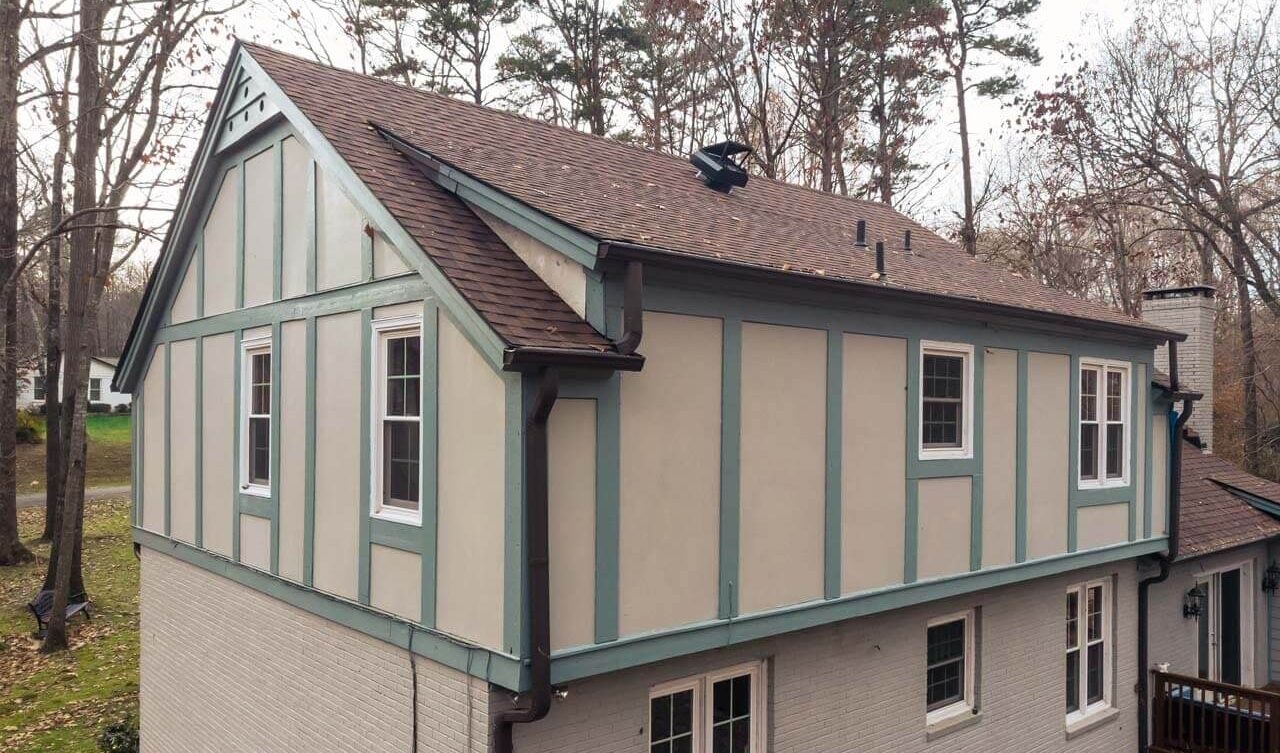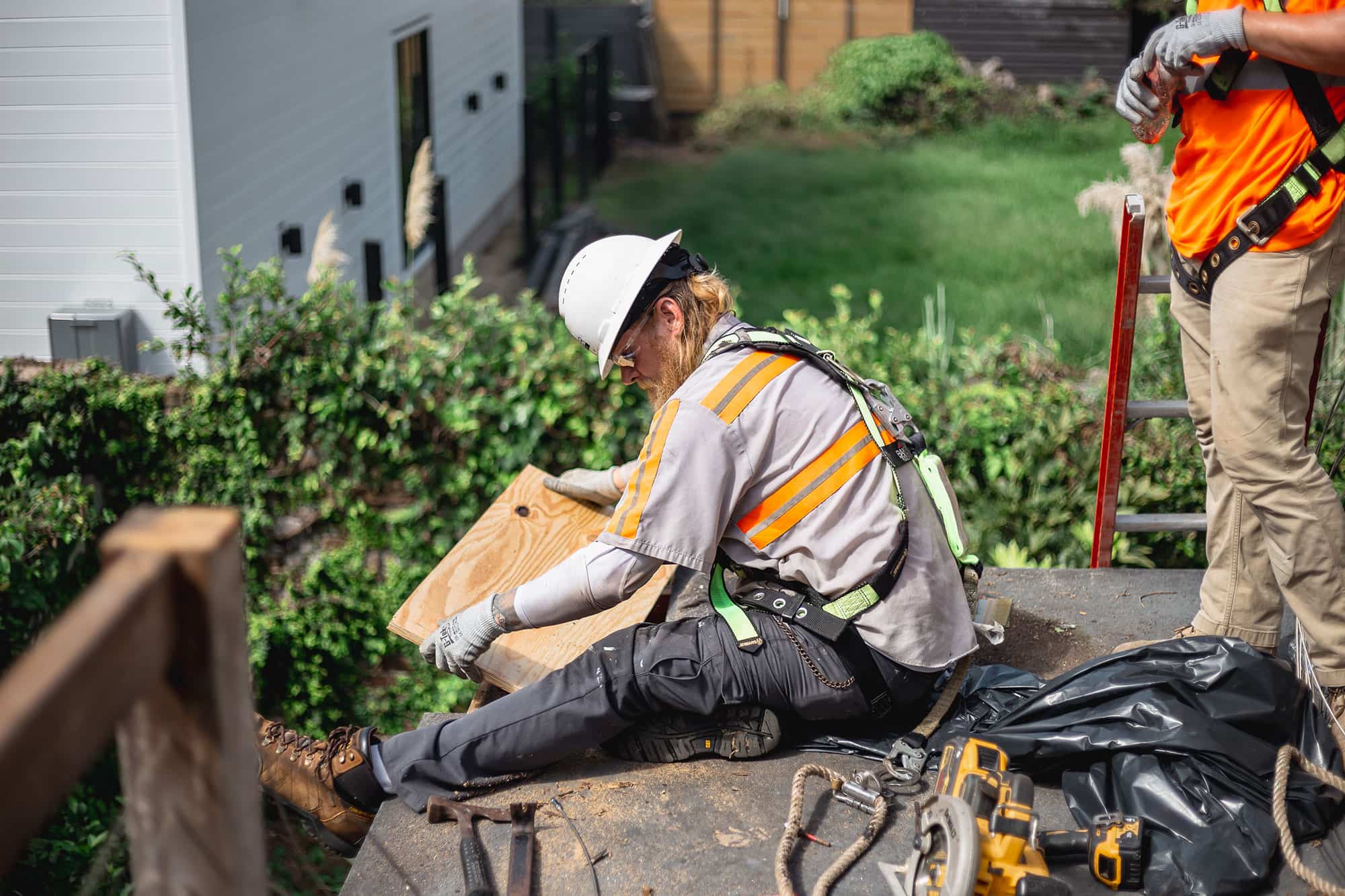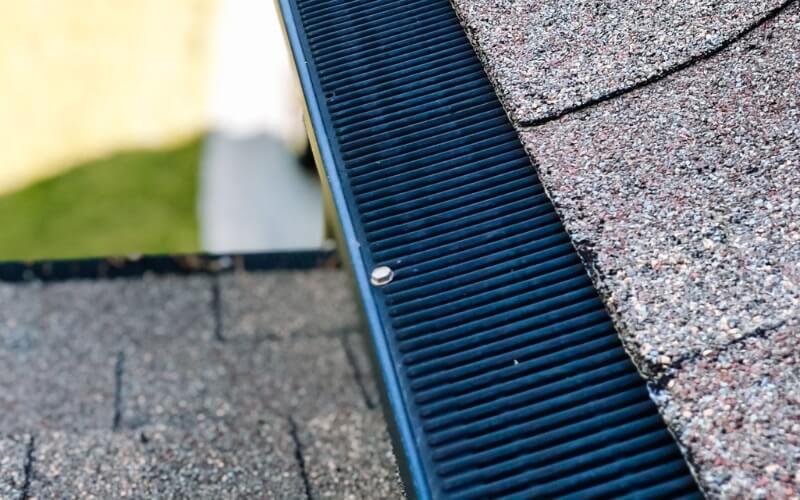Are Flat Roofs Bad? Benefits & Drawbacks
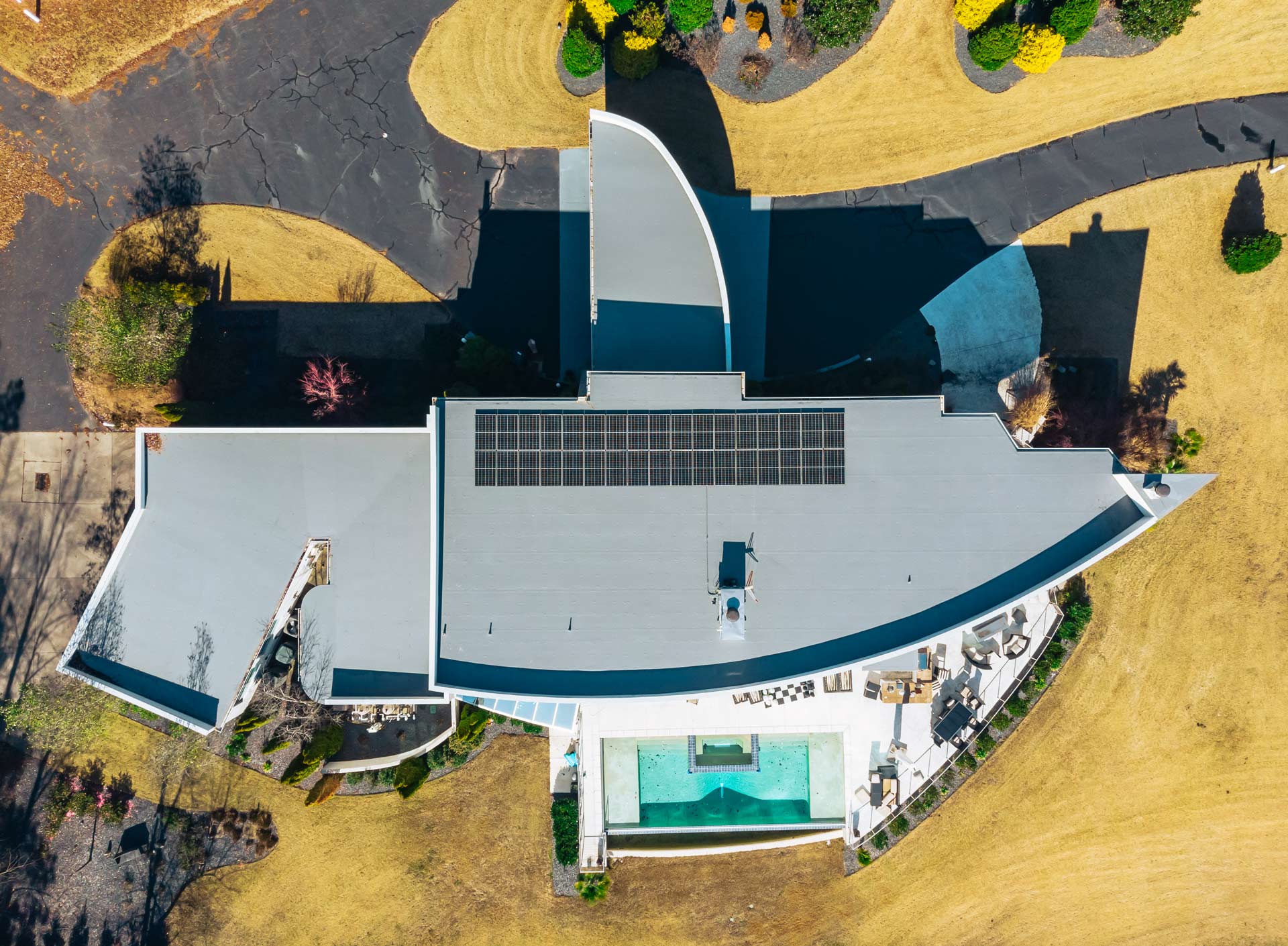
When it comes to choosing the right roof, flat roofs often get a bad rap. But are they truly the worst type of roof on the market? In this article, we’ll explore the common misconceptions about flat roofs and shed light on their often-overlooked advantages, all so that you can be sure you know which roof is best for you.
Quick Answer: Are Flat Roofs Bad
Not at all, at least when properly installed and maintained. Modern flat roofing systems are durable, energy-efficient, and cost-effective, and they offer excellent design flexibility for your home.
Admittedly, flat roofs can face drainage or maintenance challenges. But, using quality materials, waterproof coatings, and professional installation makes them just as reliable as any sloped roof, often at a lower cost and with added usable space.
Explore Baker’s Flat Roof Options for Your Home in the Carolinas
Your dream home is just a couple of clicks away. Explore our flat roof services using the button below.
Fast and free estimates.
Misconception 1: Flat Roofs Are Prone to Leaks
One of the most persistent myths about flat roofs is their supposed propensity for leaks. While it’s true that flat roofs can be more susceptible to water infiltration if not properly installed or maintained, any roof can develop leaks if neglected. As long as it’s installed with care and looked after well, a flat roof is no more vulnerable to leaks than any other roofing system. That’s especially true when you install drainage tools such as:
- Gutters collect water as it flows off the edge of your flat roof and direct it away from the building’s foundation, keeping your home safe without putting too much of a burden on your wallet.
- Scuppers are large openings along the side of your roof which allow water to flow off the edge of the building, often into a downspout ready to collect the water and direct it away from your home. These essentially accomplish the same goal as gutters, but they complement a different set of aesthetics.
- Interior drains essentially work like a shower drain, siphoning water down into a set of pipes inside your home which direct it away from the building’s foundations. This system sports a low risk of water or weather damage but carries with it a substantially higher price tag, as well as a major risk of clogging without a proper strainer.
In addition to these tools, you can apply waterproof sealants to your roof to prevent any remaining water from leaking into your home. Granted, a lot can go wrong with this process – most notably, if your roof is dirty when you apply the coating, you’ll trap moisture underneath, causing rot and mold to grow across your roof and down into your home. Because of that, it’s often a smart idea to hire professional help to apply these sealants, allowing you to keep your roof safe without risking and unwanted contamination.
Misconception 2: Flat Roofs Lack Durability
Beyond that, many people believe that flat roofs are less durable compared to their sloped counterparts. However, while it’s true that a flat roof may have a shorter lifespan if not properly maintained, you can keep your flat roof alive and well for decades on end if you give it the care it needs.
The key to this is common-sense upkeep. By clearing debris, scheduling regular inspections, protecting against UV radiation, and addressing water drainage issues like we discussed before, you can maintain your roof for up to twenty years.
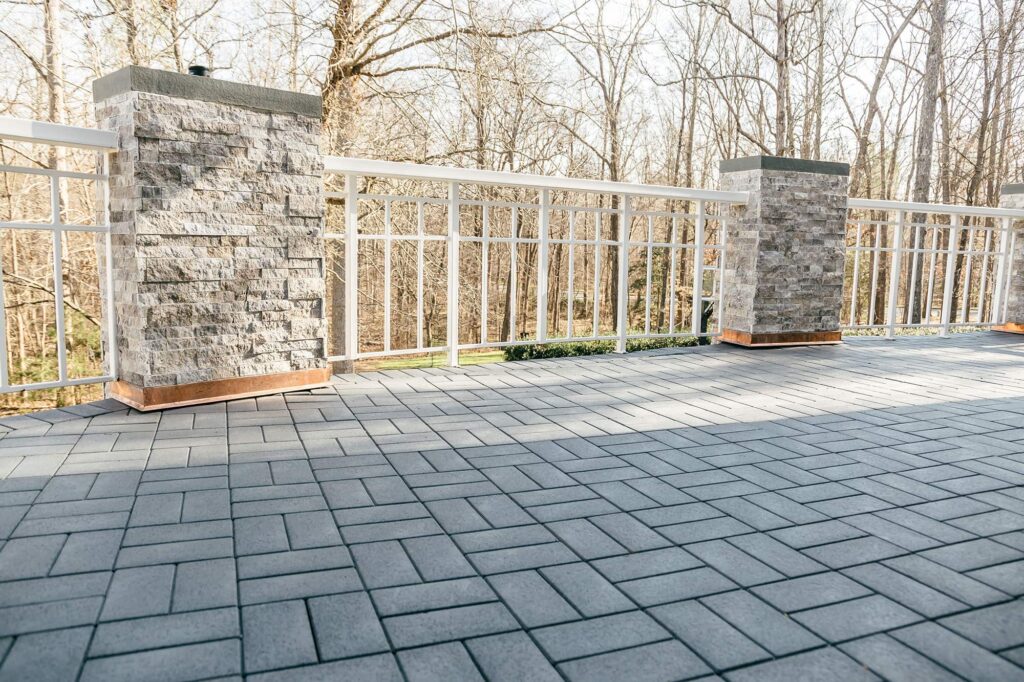
Plus, keep in mind that a flat roof can actually be quite resilient when designed and constructed right. In fact, some people opt for flat roof options precisely because they can support heavy equipment like HVAC units and solar panels. Because of that strength, a well-installed flat roof can serve you for decades.
Misconception 3: Flat Roofs Lack Aesthetic Appeal
Some homeowners may also shy away from a flat roof due to concerns about aesthetics. Sloped roofs are often seen as more visually appealing, but this really is a matter of taste – if anything, a flat roof adds a degree of uniqueness and character to your building, allowing it to stand out while reflecting what makes you and your family special.
Flat roofs also offer a variety of distinctive design opportunities. For one, they provide a sleek and modern appearance that can enhance the overall look of contemporary structures. Plus, they can be used for additional outdoor living spaces, rooftop gardens, or even solar panel installations, adding both functionality and aesthetics. But even if these options are out of your budget range, a well-designed flat roof can accompany any type of building, highlighting its best features while mirroring your personal taste.
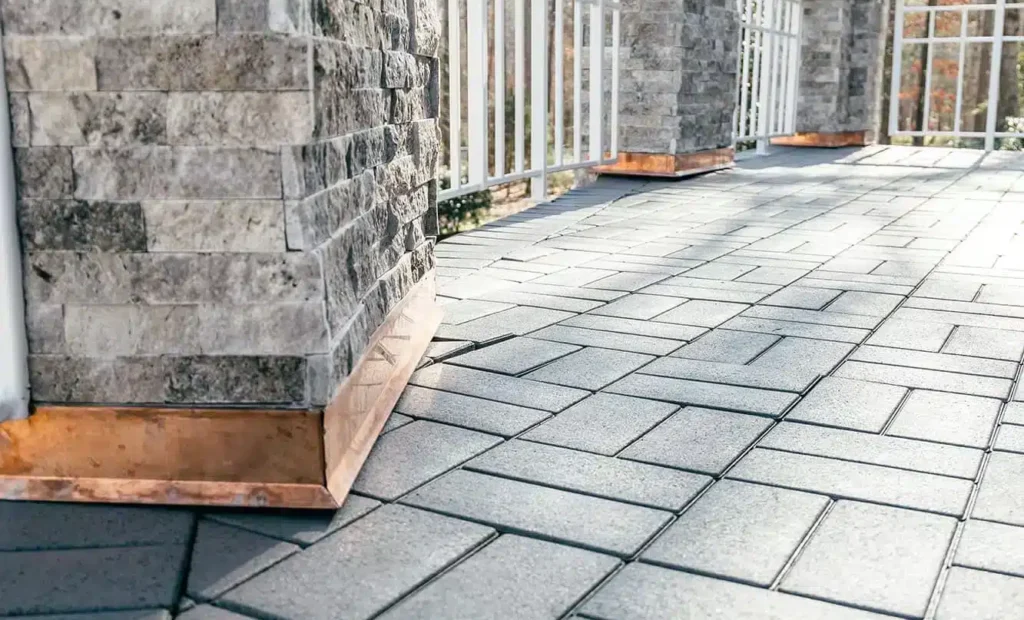
Explore Aspire Roof Pavers
Check out some great options for not only enhancing your roof’s aesthetics, but also creating more usable living space.
Misconception 4: Flat Roofs Are High Maintenance
Another misconception is that flat roofs require excessive maintenance. While it’s true that regular upkeep is essential for all types of roofs, a flat roof doesn’t necessarily demand more maintenance its sloped counterpart. In fact, they can be easier to access and inspect, making maintenance more straightforward.
Plus, keep in mind that advancements in flat roof materials and technology have made it easier than ever to maintain a flat roof. With the right coating and drainage system, flat roofs can resist UV and water damage, reducing the need for frequent repairs. Because of that, when properly cared for, a flat roof can survive and thrive for years on end without you constantly having to tend to it.
A-Frame vs. Flat Roof: A Direct Comparison
In the video below, Senior Sales Representative Steve Bartz discusses the benefits and drawbacks of a flat roof compared to a slope roof. Check it out!
The Benefits and Drawbacks of Flat Roofs
After all that, you may still be wondering, “What can a flat roof do for me?” Flat roofs have a wide variety of advantages which set them apart from their sloped counterparts, adding character to your home while making them a practical addition to keep you comfortable and safe. These include:
- Versatility: A flat roof is incredibly versatile, allowing for the installation of solar panels, rooftop gardens, and outdoor living spaces. This flexibility gives you unique control over your home, allowing you to mold it into what you always dreamed it would be.
- Energy Efficiency: Flat roofs offer excellent insulation, helping to regulate indoor temperatures and reduce energy consumption. Plus, cool roof options can be incorporated to compound this effect, keeping everyone under your roof cool and comfortable.
- Cost-effectiveness: A flat roof is often more cost-effective to install and maintain compared to a sloped roof. In fact, you can install a flat roof over a 900-square-foot area for $2,000 less than you could for a sloped roof covering the same building. Trust us, the savings are well-worth it.
- Accessibility: A flat roof provides easier access for maintenance, saving you effort while extending the lifespan of your roofing system.
- Contemporary Aesthetics: A flat roof can lend a smooth, modern look to your property, enhancing its overall appeal and allowing you to live or work in style.
Of course, flat roofs do come with some challenges. For instance, because of their low slope, flat roofs are more prone to drainage issues, ponding water, and debris buildup if not properly maintained. They also tend to have shorter lifespans than steep-slope roofs when neglected, and may require more frequent inspections to prevent leaks or membrane wear. However, quality materials and professional installation minimize these drawbacks, allowing you to enjoy all the benefits of a flat roof without the headaches.
Frequently Asked Questions (FAQs)
A flat roof is a type of roofing system with a very low slope (typically less than 2:12, or two “rise” for every 12 “run”). Instead of shedding water quickly like a pitched roof, it’s designed to hold and drain water gradually using gutters, scuppers, or interior drains.
Flat roofs are most common on commercial buildings but are also popular in modern residential architecture for their sleek, minimalist look, as well as the extra living space they provide.
To repair a flat roof, start by identifying the damaged area, cleaning away debris, and removing any loose material. Then apply a compatible patch or roofing sealant, typically made for your roof’s membrane type (TPO, EPDM, or PVC). For larger issues, such as ponding water or structural cracks, it’s best to hire a professional roofer to assess the problem and make long-term repairs safely.
If your flat roof is leaking, locate the source by inspecting seams, flashing, and drainage points. Clean and dry the area completely, then apply a roofing patch or waterproof sealant.
Temporary DIY fixes can stop small leaks, but persistent leaks usually indicate deeper issues like poor drainage or aging materials, both of which require attention from a licensed roofing contractor.
The best flat roof material depends on your building type and budget. Common high-performance options include TPO (durable and energy-efficient), EPDM (long-lasting rubber membrane), and PVC (resists chemicals and UV exposure). Modified bitumen and built-up roofing (BUR) are also proven, cost-effective choices for both residential and commercial structures. For a single-family home, we recommend TPO or EPDM, both of which are affordable and general-purpose.
A flat roof typically lasts 20–30 years with proper care, though this varies wildly based on material quality, drainage, and maintenance. For instance, a modified bitumen flat roof may only last 15-25 years, while an EPDM flat roof can reliably last 30+ years. Regular inspections, debris removal, and resealing extend the life of any flat roofing system.
To construct a flat roof, we install a structural deck (often wood, steel, or concrete), followed by an insulation layer, and waterproof membrane. The roof is slightly sloped to encourage water drainage. Finally, flashing and sealants are applied to prevent leaks and weather damage.
Installing a flat roof on an existing structure usually involves reinforcing the current framing to handle the new load, then layering insulation and waterproof membranes on top. Depending on the building’s design, a roofer may add tapered insulation or internal drains to improve water flow and prevent pooling.
A flat roof drains using systems like gutters, scuppers, or interior drains. Gutters collect runoff along the edges, while scuppers let water flow through openings in parapet walls, and interior drains funnel water through pipes built into the structure. A properly designed drainage system prevents ponding, structural stress, and leaks.
We insulate a flat roof from above or below the deck. Warm roofs place insulation above the structure (under the waterproof layer), while cold roofs place it beneath the deck. Modern systems often use rigid foam boards or spray foam insulation to improve energy efficiency and reduce heat loss.
Replacing a flat roof typically costs $5–$10 per square foot, depending on the material used and the difficulty of the labor. For example, a 1,000-square-foot flat roof might cost $5,000–$10,000 to replace. Of course, costs vary based on the chosen membrane type, insulation, accessibility, and removal of old materials.
Final Thoughts
Because of that, a flat roof is far from being the worst type of roof. While it can have its challenges if not properly cared for, common-sense installation and maintenance can make a flat roof just as reliable, durable, and aesthetically pleasing as a sloped roof, all while offering unique design opportunities and even contributing to energy efficiency and cost savings. So, if you’re considering a flat roof for your next project, don’t be swayed by the misconceptions, and embrace the value flat roofing could add to your home.
Considering a Flat Roof? Baker Has You Covered
Looking for a residential flat roof contractor near you? For over 110 years, Baker Home Exteriors has been the trusted name in roofing all throughout the Carolinas. Contact our team today to get a free quote, or if you still need time to think, check out our Google reviews. In either case, let’s get you started toward the roof you deserve.
